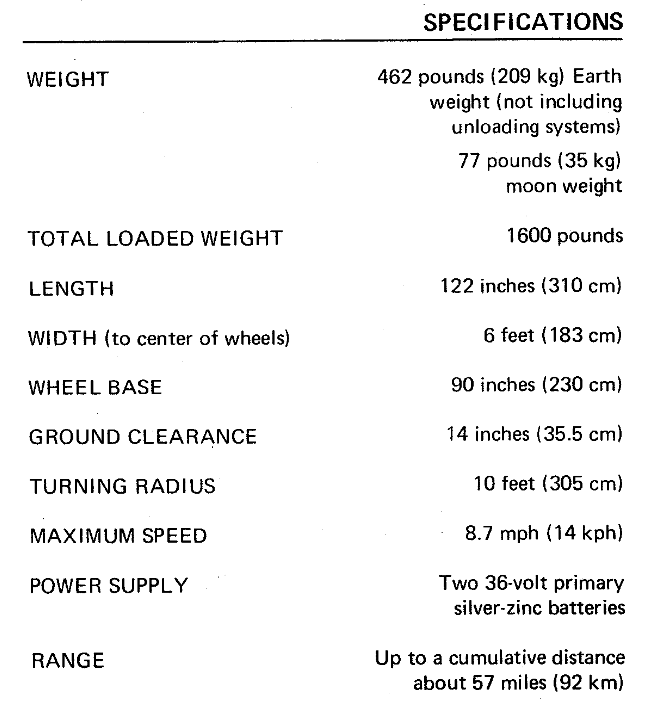The entire Lunar Roving Vehicle Operations Handbook (PDF, 38 Mb) is in meters. The only mention of "foot" is when talking about the astronauts' footrests, and "feet" does not appear at all. Kinda unexpected, considering that Boeing was the rover contractor.
Section 1.5.6 describes the Speed Indicator:
The instrument shows LRV velocity from 0 to 20 km/hr. This display is driven from the odometer pulses from the right rear wheel, through the SPU.
The document confirms that the speed indicator and directional gyro are analog devices. However, the rest of the Signal Processing Unit is digital.
The odometer is even more interesting:
Odometer pulses from all four wheels enter the odometer logic via the SPU line receivers. This logic selects the third fastest wheel for use in the distance computation. This insures that the odometer output pulses will not be based on a wheel which is locked, nor will they be based on a wheel that has excessive slip.
The odometer and the directional gyro are fed into a digital processor which calculates and accumulates the delta-North and delta-East, which is then converted back into range and direction indicators (showing how to get back to the LM).
All distances (even the turning radius) is in meters.



